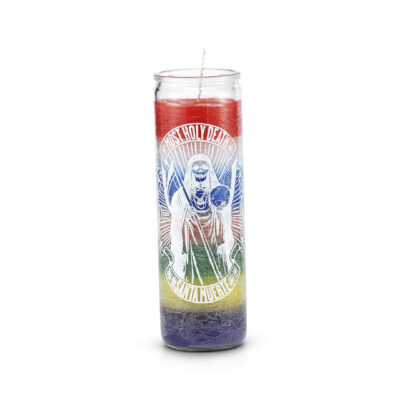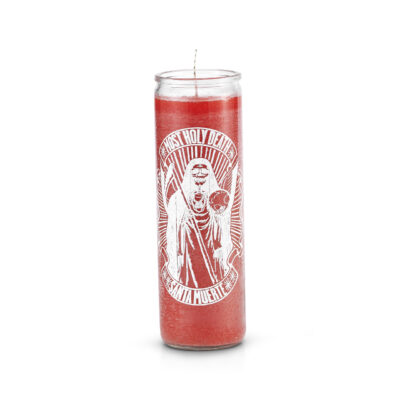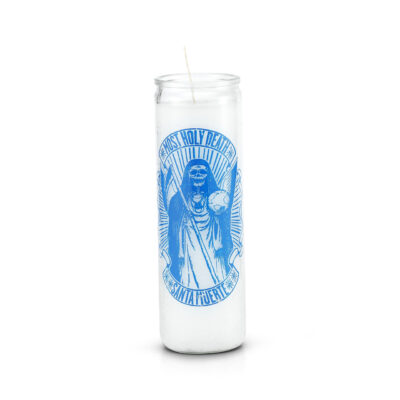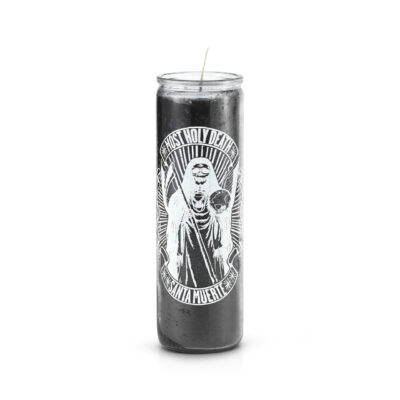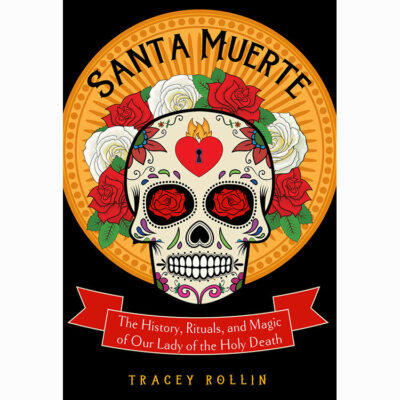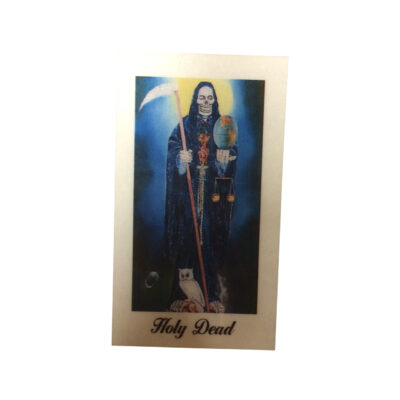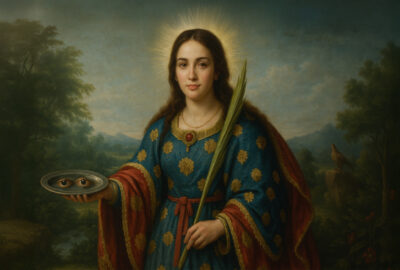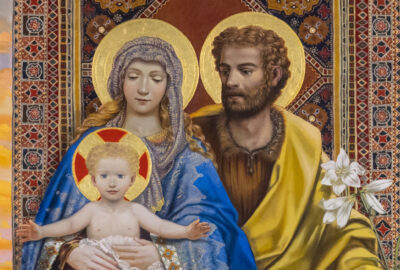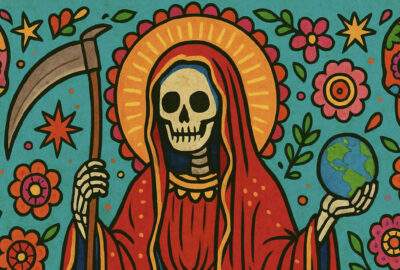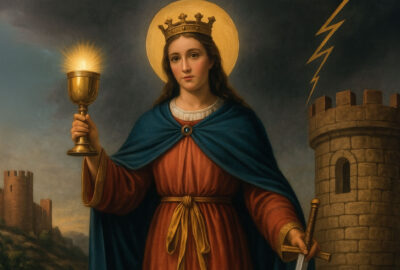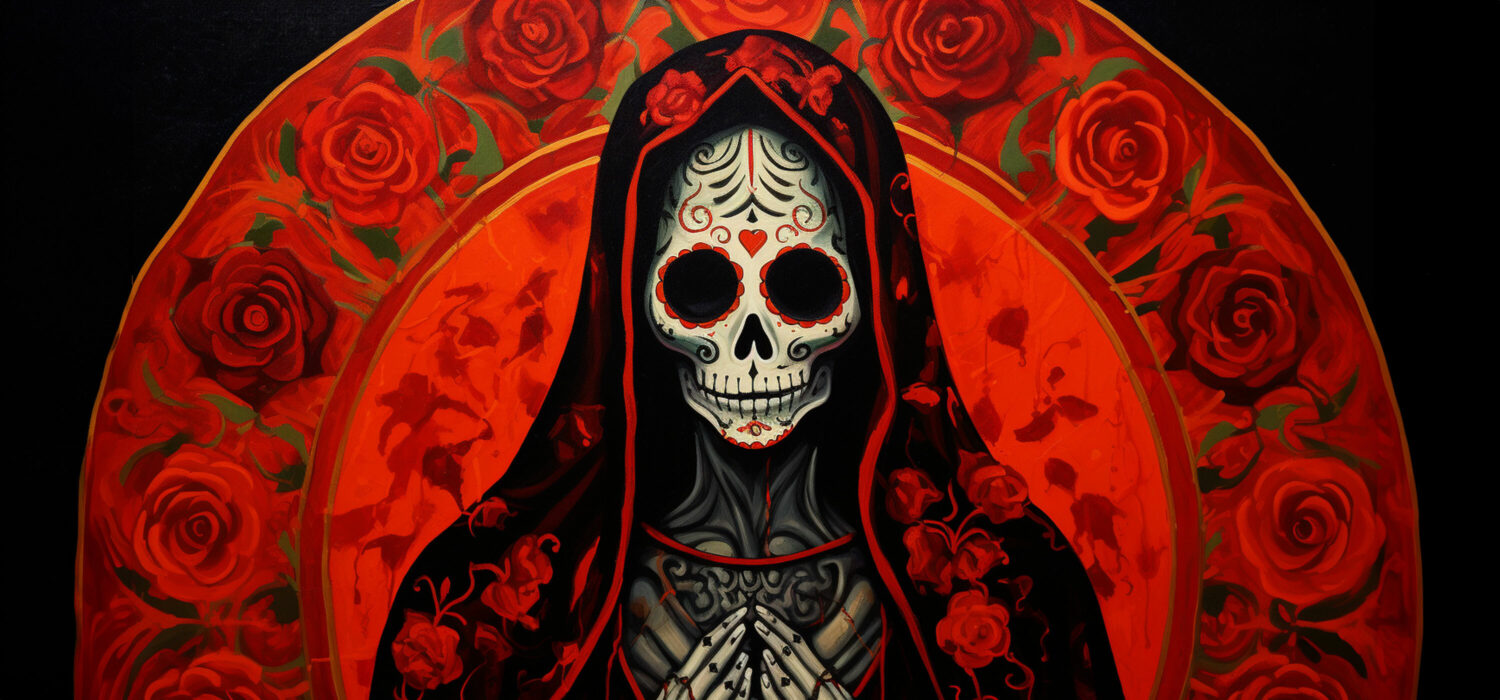
Santisima Muerte: History, Meaning, and Worship
Santa Muerte, also known as "Holy Death," "The White Lady," and "La Hueseda" is a special saint with a deep connection to the essence of death. She's often depicted as a female version of the Grim Reaper, wearing a robe and holding a scythe. But what makes her unique is her feminine touch, with jewelry, flowers, and flowing hair adding to her appearance. Also, although Santisima Muerte and the Grim Reaper share some similarities in their skeletal appearances, they are very distinct entities. While the Grim Reaper is a personification of death in Western folklore, Santisima Muerte has evolved as a revered figure with a unique blend of Catholic and indigenous influences.
People who follow Santa Muerte see her as a warm and friendly spirit who enjoys watching over the living. She has incredible power over everything related to death and decay, which means she can help with a wide range of things. When life is troubled by sickness or addiction, people turn to Santa Muerte for healing. She also brings financial blessings, helps with legal problems, and protects against harm, cutting through curses and negative energy. Her wisdom spans many realms, helping her followers gain deeper understanding, creativity, and magical abilities.
Santa Muerte is not just about death; she also holds sway over the spirit world and mystical dimensions. This allows people to connect with the spirits of the deceased and other mystical beings. Because death has the power to transform our consciousness, she's considered a powerful spirit for magic, helping people develop wisdom, strength, and awareness. This boosts their magical abilities, making her a valuable ally for witches and magicians.
Her powers are vast and flexible, and she doesn't judge the reasons behind requests. To her, life and death are equal, so she's more likely to respond to heartfelt requests, even if they seem a bit self-centered. She's open to helping with both positive and negative intentions, which has caused some controversy and suspicion from religious and civil authorities.
The Controversy That Surrounds Santisima Muerte
In recent years, Santa Muerte has gained attention for her association with drug traffickers, leading the US Federal Bureau of Investigation to label her a "narco-saint." This link has been connected to acts of violence and ritualistic activities on both sides of the US–Mexico border. Some drug cartels have even formed cults around her, believing she can protect and assist them. Media stories have highlighted her statues in places like graveyards, suggesting they are used in spells to harm people. The Catholic Church strongly opposes her, calling her a figure of evil.
Law enforcement sees her presence at crime scenes as a foreboding sign because drug traffickers can become more dangerous when they believe she's protecting them. As a result, the Mexican military sometimes targets Santa Muerte shrines to discourage cartel members, even if they don't personally believe in her power.
Despite these challenges, Santa Muerte's popularity has grown significantly. This is partly due to increased immigration and media reports linking her to drug cartels. She's become a pop culture icon, appearing in popular TV shows and inspiring characters in movies. Her image is found on various products, and her followers now number in the millions worldwide, making her one of the fastest-growing spiritual movements today.

Get 20% Off Your First Santa Muerte Order!
For a limited time, use coupon code MUERTE24 and receive 20% off your first order of any of our Santa Muerte products! Offer only good for new customers (excludes wholesale). Don't wait! This offer expires soon!
The Ancient History of Santisima Muerte
Santisima Muerte emerges from the depths of history, tracing her origins to the sacred traditions of the ancient Aztecs. Her compelling narrative intertwines with the tapestry of life and death, offering solace and guidance to those who seek her enigmatic presence. In the annals of Aztec spirituality, death was not merely the end of life but a profound transition, a journey to the afterlife. The Aztecs, recognizing the inevitability of death, personified this concept in the form of skeletal figures.
Santisima Muerte, in her skeletal manifestation, bears echoes of these ancient rituals. Believed to be a derivative of Mictecacihuatl, the Aztec goddess of Death, she carries forward the reverence and rituals of her predecessors. These skeletal figures were revered, prayed to, and worshiped with fervor. They embodied the hope for a safe and peaceful passage into the realm beyond, offering solace to those grappling with the mysteries of mortality.
Santa Muerte's Mexican Origins
The veneration of Santa Muerte comes to us from Mexico, where she is publicly celebrated as the patron saint of the Day of the Dead. Mexico is a predominantly Catholic country. Catholics believe in a wide variety of saints. Saints are spiritual personalities who are believed to have an especially close relationship with God. Catholics pray to saints because they can use this special relationship to intercede in the lives of people.
The Catholic Church recognizes over 1,500 official saints with new ones canonized annually. To become a saint, a deceased person must meet certain criteria, such as performing a number of miracles that can be directly attributed to him or her. Only after a lengthy investigation by a Vatican commission may a person be canonized and added to the official roll of Catholic saints.
Santa Muerte: A Folk Saint for the Marginalized
There are many saints whose ability to perform miracles is acclaimed by popular belief, but they have not been vetted by a Vatican commission. These kinds of saints, which include Jesus Malverde and others, are called "folk saints." Despite their unofficial status, the Catholic Church tends to tolerate their veneration alongside the veneration of the official Catholic patrons. Santa Muerte is venerated as a folk saint.
Because death is the great equalizer, Santa Muerte is the patron saint of marginalized people who live on the fringes of society, many of whom suffer from rejection by the mainstream culture. These people include not only the working poor, but also criminals, drug addicts, gay people, prostitutes, single mothers, the homeless, and the mentally ill. She is also often considered the patron saint of people who work at night, such as taxi drivers, bartenders, exotic dancers, and after-hours cleaning and maintenance staff.
These types of workers are at higher risk for accidents, assaults, robberies, and all types of violent death specifically because they work at night. Santa Muerte is often called Senora de la Noche (Spanish, "Lady of the Night") because believers hope that she will protect them from these types of calamities. Since people who live on the fringes of society often feel that they have nowhere else to turn, Santa Muerte is sometimes also called the Saint of Last Resort.
Santa Muerte's Role in the Day of the Dead
Although the Catholic Church has condemned the veneration of Santa Muerte, this has not prevented her from becoming the unofficial patron saint of the annual Day of the Dead celebration in Mexico. The Day of the Dead, or Dia de los Muertos, is a national holiday when the souls of the dead are thought to return to enjoy the pleasures of life as well as the closeness of family and friends.
Rather than a somber occasion, the Day of the Dead is intended to be a bright and jubilant one. People gather to celebrate the spirits of their deceased loved ones and the lives that they lived. This celebration is not only believed to strengthen the bonds of the family but is also an opportunity to ask the dead for their assistance and protection. Cleaning and tending graves is a common activity as well, with many people leaving flowers, food, and other gifts for the dead to enjoy.
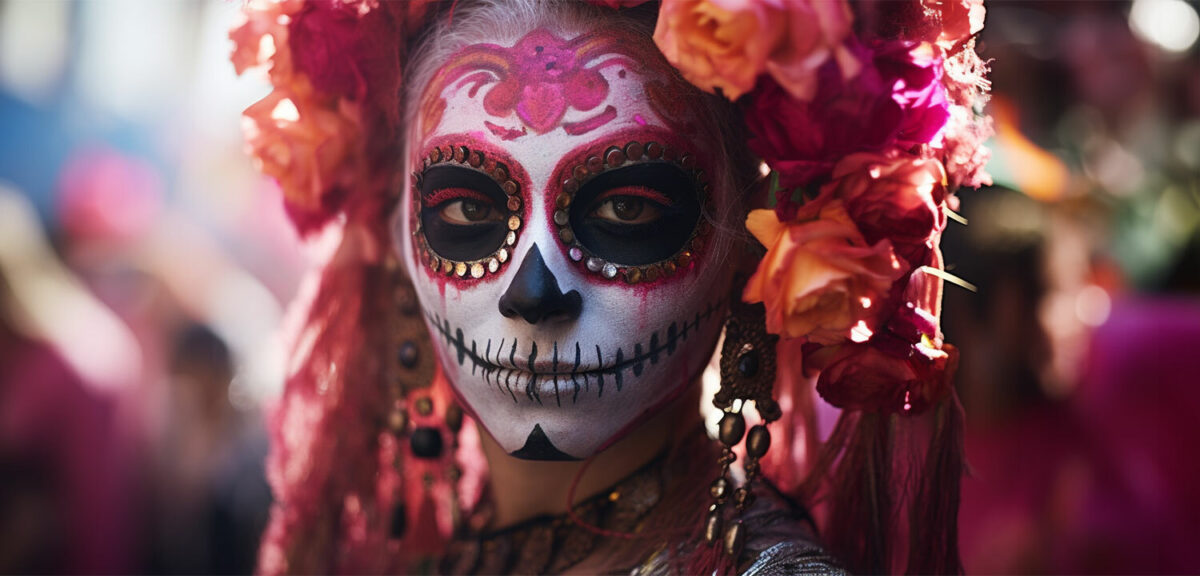
Santa Muerte has become the unofficial patron saint of the annual Day of the Dead celebration in Mexico.
Unlocking the Symbolism of Santisima Muerte
In the captivating iconography of Santisima Muerte, every element holds profound meaning, inviting us to explore the depths of devotion that she inspires.
The Colors of Her Gown
Santisima Muerte's gown, adorned in various hues, conveys intentions and desires with each shade. While her white tunic is the most prevalent, symbolizing purification and spiritual cleansing, the spectrum of colors offers a tapestry of symbolism.
When she dons red, her presence embodies not only passionate love but also courage in adversity. In black, the saint of death wards off malevolent forces, shielding her devotees from dark magic and harm. Wrapped in yellow, she extends her benevolence to those grappling with illness and addiction. And in green, she embodies justice, extending her compassionate hand to those ensnared in legal battles.
The Objects She Holds
Within her skeletal grasp, Santisima Muerte cradles objects steeped in significance, each a guardian of aspiration and protection.
Her scythe, a symbol reminiscent of the Grim Reaper, serves as a dual-edged instrument. It represents the cutting away of negative energies, cleansing the path of her followers. At the same time, it stands as a universal symbol of death, a reminder of our mortality, and a harbinger of rebirth into the afterlife.
In her other hand, she cradles a globe, an emblem of her dominion over the Earth. This globe signifies her willingness to aid and protect people of all nationalities and ethnicities. It is a universal invitation to seek her guidance and benevolence, transcending borders and divisions.
The Guardians at Her Feet
At the feet of Santisima Muerte, one often finds a trio of symbols, each offering unique insights into her protective role.
A scale, a timeless symbol of justice, lies at her feet. It embodies her commitment to fairness and balance, ensuring that her devotees are treated equitably and that their pleas for justice are heard.
The great owl, vigilant and perceptive, symbolizes her unwavering watchfulness. Just as this nocturnal creature navigates the blackest of nights, Santisima Muerte guards her followers against unseen threats and adversaries, offering them a sense of security in the darkness of life's challenges.
The hourglass, poised beside her, serves as a poignant reminder of the finite nature of our existence. It urges us to treasure the precious gift of time on Earth, reinforcing the importance of cherishing every moment.
In understanding the intricate symbolism woven into the tapestry of Santisima Muerte's imagery, we gain insight into the profound connection that her devotees share with this enigmatic and compassionate saint of death. Through her symbolic language, she offers solace, guidance, and protection to those who seek her benevolence.
Honoring Santisima Muerte
Traditionally, veneration of Santisima Muerte has been a private practice, partially because of condemnation by civil and religious authorities and partially because of the negative connotations associated with her worship. Because of the strong Catholic influence, Mexico also has strong cultural taboos against using witchcraft, especially for malign purposes. People who use witchcraft risk social ostracism or worse, as it is often equated with malevolence. Many perceive turning to the power of Death itself for aid as an act of desperation.
People turn to Santisima Muerte for various reasons, including protection, guidance, prosperity, cleansing, money, and love. Her inclusive nature and accessibility make her a source of comfort and support for those who feel marginalized or disconnected from traditional religious institutions.
An Altar and Prayer for Santisima Muerte
Santisima Muerte is often worshiped at an altar created in her honor. Candles of red, black, and white typically adorn the altar, invoking Santa Muerte and her protection. This altar should be located in a calm place, free from distractions and skeptics. Clear, clean water should always be prominently displayed on your altar, as a symbol of life and purity. Offerings of bread and wine or liquor are also strongly encouraged to provide sustenance for this idol.
The energy of Santa Muerte is most vibrant at night, and prayers made to her after sunset will be the most powerful. On a Tuesday or Thursday night during a full moon, light your altar candles, place your Santisma Muerte prayer card on the altar, and recite the following prayer:
Most Holy Death, I ask that through this image you will cover me with the cloak of your protection, that you always take care of me and guide me through all snares and dangers. Give me your blessing so that I never lack the things I need. Give me strength, health, prosperity, and protection.
Jewelry such as amulets, necklaces, and bracelets fashioned in Santisima Muerte’s image are also potent talismans. Wear them to grant prosperity, help in legal matters, protect you from harm, and succeed in business affairs.

